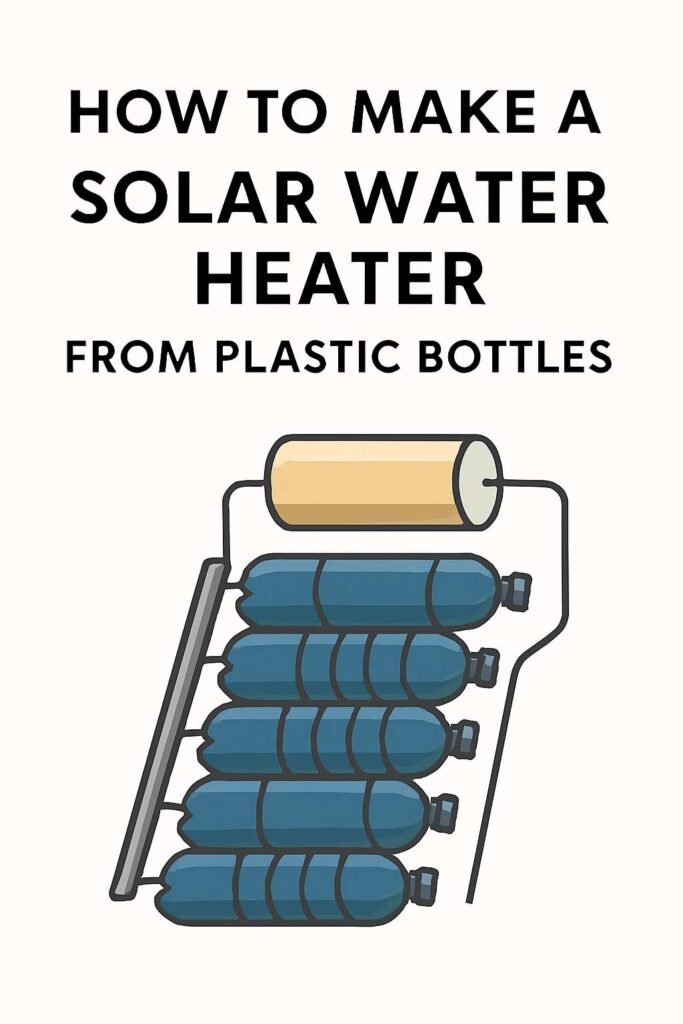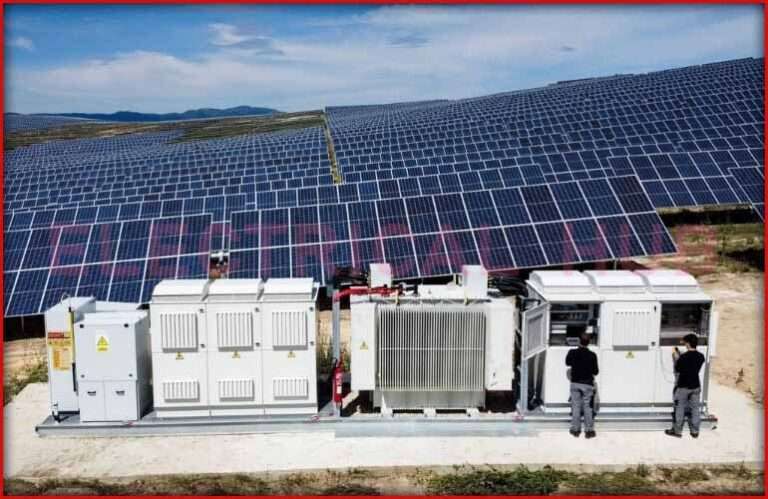How to Make a Solar Water Heater from Plastic Bottles: Step by Step Guide
If you’ve ever wondered how to make a solar water heater from plastic bottles, this guide will walk you through every detail in a simple, practical way. It’s a low-cost and eco-friendly project that not only saves energy but also reuses plastic bottles that would otherwise contribute to waste. Whether you live in a remote area or just want to explore sustainable DIY projects, this method can help you heat water using sunlight and recycled materials.
Solar water heaters work on a simple principle — converting solar radiation into heat energy. By using dark-colored surfaces and transparent covers (like PET bottles), sunlight gets trapped, raising the temperature of water flowing through them. With a little patience and effort, you can make your own solar water heater at home with almost no cost.
Table of Contents
Table of Contents

In this article, we’ll explain step-by-step how to make a solar water heater from plastic bottles, the materials required, its efficiency, and important design tips to get the best results. This project is especially popular in rural areas, schools, and small households looking for affordable water heating options.
Key Takeaways
- A solar water heater from plastic bottles is a low-cost, sustainable, and effective way to heat water using sunlight.
- You can build one using recycled PET bottles, black pipes, and a wooden frame with minimal investment.
- With proper orientation and insulation, it can heat water up to 60°C (140°F) on a sunny day.
- It’s an excellent DIY project for students, homeowners, and eco-enthusiasts to understand renewable energy in action.
Understanding the Concept of a Solar Water Heater
Before learning how to make a solar water heater from plastic bottles, it’s important to understand how solar water heating works. The concept is based on three basic principles of heat transfer: absorption, retention, and circulation.
- Absorption: The black surface or pipe absorbs sunlight, converting it into heat.
- Retention: Plastic bottles act as mini greenhouses that trap heat inside, preventing it from escaping.
- Circulation: Water flows through the heated pipe, absorbs heat, and becomes hot over time.
In essence, it’s a mini solar collector system that uses simple materials instead of expensive solar panels.
Know more about Solar Thermal Water Heater Cost – Complete Price Guide for 2025
Materials Required to Make a Solar Water Heater from Plastic Bottles
You don’t need complex tools or costly items for this project. Here’s a list of the materials you’ll need:
| Material | Quantity | Purpose |
|---|---|---|
| Plastic bottles (2L PET bottles) | 40–50 | Act as mini solar collectors |
| Black PVC or metal pipe (½ inch) | 20–25 ft | Absorbs sunlight and heats the water |
| Wooden or metal frame | As required | To hold the bottles and pipes securely |
| Black paint (non-toxic) | 1 can | To increase sunlight absorption |
| Silicone sealant or tape | As needed | For sealing leaks between bottles |
| Water storage tank | 1 | To store hot water |
| Hose pipes | 2 | For inlet and outlet connection |
All these materials are easily available and inexpensive. You can even use discarded bottles and pipes to make the project more sustainable.
Use our online tool electricity load calculator in kw for home
Step-by-Step Process: How to Make a Solar Water Heater from Plastic Bottles
Let’s dive into the practical steps of building your solar water heater.
Step 1: Clean and Prepare the Bottles
Collect around 40 to 50 used plastic bottles of similar size (preferably 2-liter PET bottles). Wash them thoroughly to remove any dirt or residue. Remove the labels to allow maximum sunlight penetration.
Step 2: Paint the Pipes Black
Take your PVC or metal pipes and paint them black using non-toxic, heat-resistant paint. Black surfaces absorb more sunlight and heat the water faster. Let the paint dry completely before assembly.
Step 3: Cut the Bottoms of the Bottles
Using a sharp cutter or knife, remove the bottom part of each bottle. This helps them interlock and cover the entire length of the pipe like sleeves.
Know more about Solar Water Heater Working Principle – Complete Guide to How It Works
Step 4: Assemble the Bottles and Pipes
Slide each bottle onto the pipe one by one, so the neck of one bottle fits into the cut bottom of the next. Make sure the entire pipe is covered with bottles. Seal the joints with silicone or waterproof tape to prevent heat loss and water leakage.
Step 5: Mount the Pipes on a Frame
Fix the pipes with bottles onto a sturdy wooden or metal frame. The frame should be tilted at an angle of around 30–45 degrees, facing the sun’s direction (south-facing in the northern hemisphere). This ensures maximum exposure to sunlight during the day.
Step 6: Connect to the Water Tank
Connect one end of the pipe to your cold-water inlet tank and the other end to the outlet or storage tank. When sunlight heats the pipe, the warm water will naturally rise and flow into the storage tank through convection.
Step 7: Test the System
Fill the system with water and allow it to heat under direct sunlight for 3–4 hours. You’ll notice the water temperature rise significantly — sometimes up to 60°C depending on weather conditions and setup quality.
How Efficient is a Plastic Bottle Solar Water Heater?
Efficiency depends on several factors like sunlight intensity, bottle transparency, water flow rate, and insulation. Typically, a well-built DIY plastic bottle solar heater can achieve 40–60% efficiency, which is quite good for a zero-cost system.
Here’s a comparison of efficiency levels:
| Condition | Average Water Temperature | Efficiency (%) |
|---|---|---|
| Sunny day (clear sky) | 55–60°C | 60% |
| Partly cloudy | 40–45°C | 45% |
| Overcast sky | 25–30°C | 30% |
To improve efficiency, keep the bottles clean, reduce air gaps between them, and paint the pipes regularly to maintain heat absorption.
Know more about Top Solar Inverters for Home Use: Engineering Comparison & Cost Guide 2025
Tips to Improve Performance and Durability
To make your system last longer and perform better, here are some pro tips:
- Use UV-resistant plastic bottles to prevent cracking from sun exposure.
- Add insulation (like foam or cloth) behind the frame to reduce heat loss.
- Regularly clean the bottles to keep sunlight penetration strong.
- For areas with low sunlight, you can use reflective foil around the frame to redirect extra light.
- Install a temperature valve if you plan to connect it to a household system.
Benefits of Making a Solar Water Heater from Plastic Bottles
Creating a solar water heater using plastic bottles has multiple benefits beyond just heating water.
- Cost-Effective: You can build one at home for less than $20.
- Environmentally Friendly: It reuses waste plastic, reducing landfill impact.
- Energy Saving: Completely operates on renewable solar energy.
- Educational Value: Great for schools and students to understand renewable energy principles.
- Maintenance-Free: Once installed, it requires minimal attention and no electricity.
Common Mistakes to Avoid
When learning how to make a solar water heater from plastic bottles, avoid these common errors:
- Using unclean bottles, which reduce sunlight penetration.
- Wrong angle alignment, leading to poor sunlight capture.
- No sealing, allowing air leaks and reducing heat retention.
- Using colored bottles, which block solar radiation.
Proper setup and maintenance can make your system last up to 5 years or more with consistent performance.
Use our online tool Wire Size Calculator for Solar Panels – Avoid Power Loss in Off-Grid and Hybrid Systems
Applications of Plastic Bottle Solar Water Heaters
This type of DIY solar heater is versatile and can be used in several practical ways:
- Domestic use: Heating water for bathing, cleaning, or kitchen work.
- Agricultural use: Providing warm water for livestock or irrigation systems.
- Educational projects: Demonstrating renewable energy concepts in schools.
- Emergency situations: Useful in off-grid or disaster-prone areas where electricity is unavailable.
Cost and Performance Comparison
| Type of Solar Heater | Cost Range | Water Output (Liters/Day) | Maintenance |
|---|---|---|---|
| Plastic Bottle Heater | $10–$20 | 40–60 | Low |
| Commercial Flat Plate Collector | $200–$400 | 80–120 | Moderate |
| Evacuated Tube Collector | $400–$700 | 100–150 | Moderate |
Clearly, a plastic bottle solar water heater is the most affordable and eco-conscious option for small-scale or experimental use.
Conclusion
Learning how to make a solar water heater from plastic bottles is a rewarding experience. It’s practical, sustainable, and demonstrates how renewable energy can be harnessed creatively using everyday materials. You don’t need expensive solar panels or advanced equipment — just sunlight, a few bottles, and basic tools.
Know more about Floating Solar Panel Systems Design & Cost Analysis
By building one, you’ll save money, reduce plastic waste, and gain hands-on knowledge about solar heating. Whether you’re a student, a homeowner, or an environmentalist, this DIY project is a perfect example of innovation meeting sustainability.
Follow Us on Social:
Subscribe our Newsletter on Electrical Insights to get the latest updates in Electrical Engineering.
#SolarWaterHeater, #DIYProjects, #PlasticBottleRecycling, #SolarEnergy, #RenewableEnergy, #SustainableLiving, #EcoFriendly, #SolarHeater, #DIYHomeProjects, #GreenEnergy, #WaterHeating, #SolarPower, #Upcycling, #HomemadeHeater, #CleanEnergy





